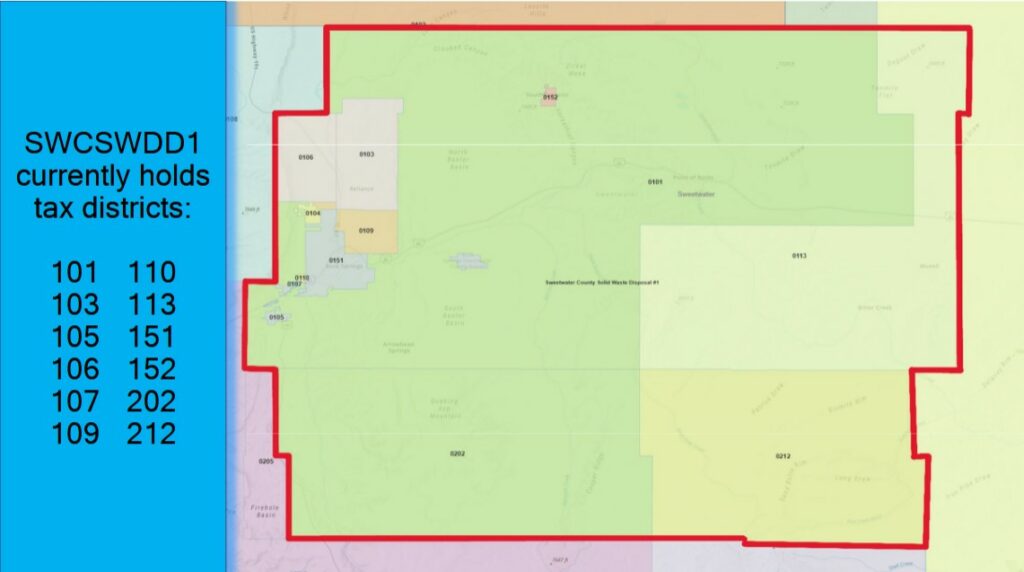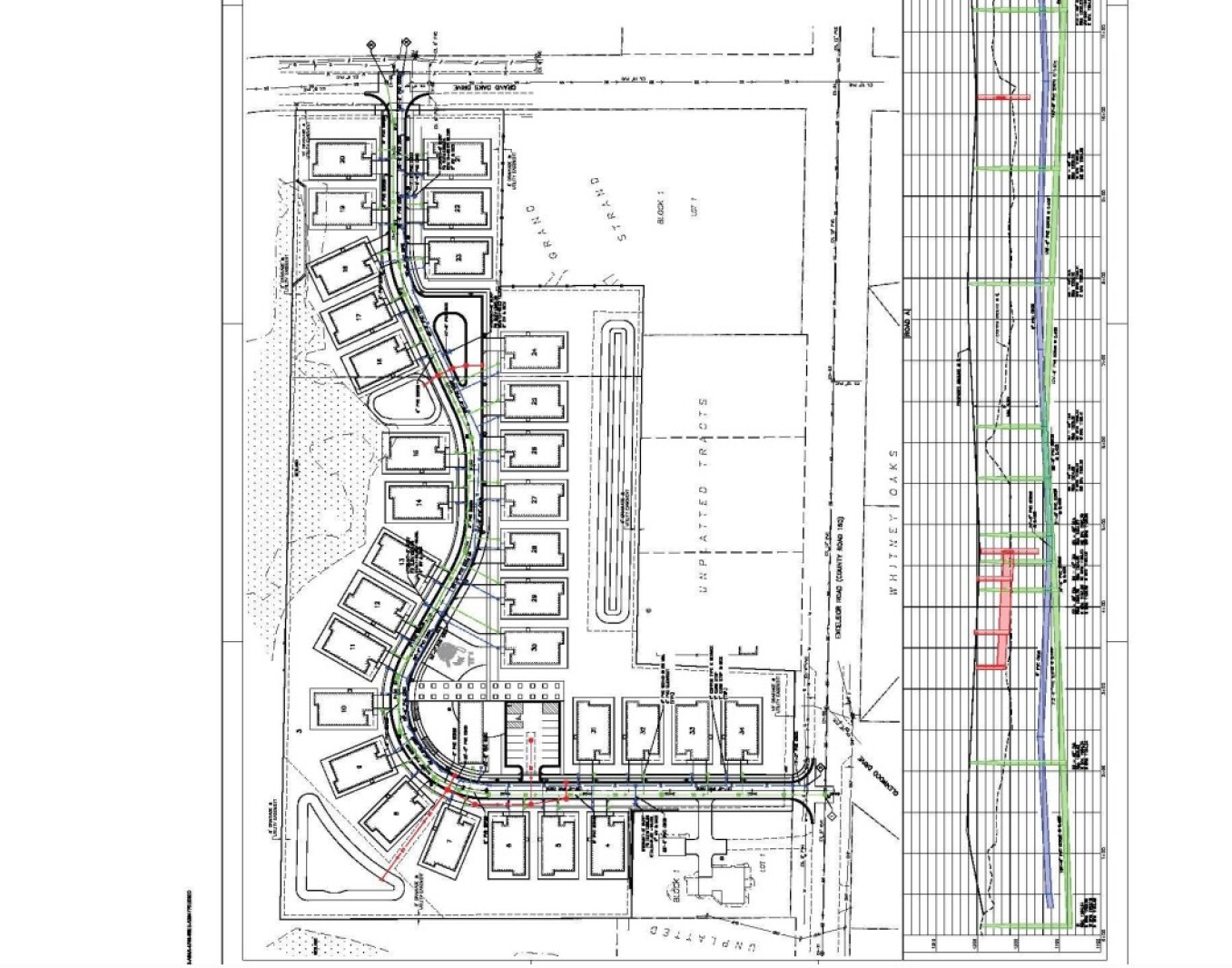Report on the Proposed Expansion of Sweetwater County Solid Waste Disposal District No. 1
1.0 Introduction
The Sweetwater County Solid Waste Disposal District No. 1 (SCSWD No. 1) has submitted a proposal to the Sweetwater County Board of County Commissioners for a significant expansion of its service area. The proposal seeks to incorporate five additional tax districts, including the communities of Green River and Jamestown. This initiative is designed to enhance operational efficiency, ensure long-term financial stability, and align the county’s waste management practices with key United Nations Sustainable Development Goals (SDGs).
2.0 Strategic Objectives and Alignment with Sustainable Development Goals (SDGs)
The proposed expansion is directly linked to achieving several SDGs by creating a more comprehensive and sustainable waste management system. The primary objectives include:
- Improving Municipal Waste Management (SDG 11: Sustainable Cities and Communities): By expanding services and consolidating operations, the district aims to improve the collection and management of municipal solid waste, a key target (11.6) for creating sustainable and resilient communities.
- Promoting Responsible Consumption and Production (SDG 12): The plan introduces critical infrastructure to substantially reduce waste generation. This directly supports Target 12.5, which focuses on prevention, reduction, recycling, and reuse.
- Protecting Terrestrial Ecosystems (SDG 15: Life on Land): Extending the operational life of the current landfill and minimizing environmental impacts from waste will help protect local land resources from pollution and degradation.
3.0 Key Components of the Proposal
The expansion facilitates several new programs and capital investments aimed at advancing the district’s sustainability mission.
- Introduction of New Recycling and Composting Programs: These initiatives are central to achieving SDG 12 by diverting significant waste from landfills and promoting a circular economy.
- Establishment of a Tire Repository: Proper management of end-of-life tires prevents environmental pollution and supports recycling efforts.
- Acquisition of an Industrial Shredder: This equipment will increase landfill density, thereby extending its lifespan and reducing the need for future land use, which aligns with SDG 15.
4.0 Financial and Community Impact
- Funding Model: The expansion is proposed to be funded through an estimated 3.9% increase in annual property tax for homeowners within the new service districts. This model is designed to create a stable, long-term funding source for sustainable waste management infrastructure, contributing to the financial resilience targeted in SDG 11.
- Long-Term Benefits: Officials state that the consolidation will reduce long-term costs for residents by improving efficiency and eliminating the substantial future expense of constructing a new landfill.
5.0 Governance and Public Participation
The proposal will be formally presented by Dan Chetterbock of SCSWD No. 1 at the Sweetwater County Courthouse. The meeting is open to the public, ensuring transparency and community involvement in decisions that affect local environmental governance, a principle embedded within the SDGs, particularly SDG 17 (Partnerships for the Goals).
Analysis of Sustainable Development Goals in the Article
1. Which SDGs are addressed or connected to the issues highlighted in the article?
-
SDG 11: Sustainable Cities and Communities
The article directly addresses the improvement of municipal services, specifically solid waste management, for communities like Green River and Jamestown. The proposal aims to create a more efficient and environmentally sound waste disposal system, which is a core component of making cities and human settlements inclusive, safe, resilient, and sustainable.
-
SDG 12: Responsible Consumption and Production
This goal is central to the article’s focus on waste management. The introduction of “new recycling and composting programs” and the plan to purchase a “shredder” are actions aimed at reducing waste generation and promoting sustainable management of resources, directly aligning with the principles of responsible consumption and production.
-
SDG 13: Climate Action
While not explicitly stated, improving solid waste management has direct implications for climate action. Extending landfill life and implementing composting programs reduce the emission of methane, a potent greenhouse gas generated from decomposing organic waste in landfills. Therefore, the proposal contributes to mitigating climate change.
-
SDG 17: Partnerships for the Goals
The article describes a public partnership between the Sweetwater County Solid Waste Disposal District No. 1 and the Sweetwater County Board of County Commissioners. This collaboration, funded through a proposed property tax increase, exemplifies the multi-stakeholder partnerships needed to implement sustainable development initiatives at the local level.
2. What specific targets under those SDGs can be identified based on the article’s content?
-
Target 11.6: By 2030, reduce the adverse per capita environmental impact of cities, including by paying special attention to air quality and municipal and other waste management.
The proposal to expand the solid waste district’s service area and implement new programs is a direct effort to improve municipal waste management and “minimize environmental impacts,” as stated in the article.
-
Target 12.5: By 2030, substantially reduce waste generation through prevention, reduction, recycling and reuse.
The plan to introduce “new recycling and composting programs” and purchase a “shredder” to extend landfill life directly supports this target by focusing on waste reduction and recycling.
-
Target 13.2: Integrate climate change measures into national policies, strategies and planning.
The local-level plan to improve waste management, which has the co-benefit of reducing greenhouse gas emissions from landfills, can be seen as an integration of climate-conscious measures into local planning and strategy.
-
Target 17.17: Encourage and promote effective public, public-private and civil society partnerships, building on the experience and resourcing strategies of partnerships.
The proposal presented by the Solid Waste District to the County Commissioners is a clear example of a public-public partnership designed to achieve environmental and economic goals for the community.
3. Are there any indicators mentioned or implied in the article that can be used to measure progress towards the identified targets?
- Indicator for Target 11.6: The expansion of the service area to cover Green River and Jamestown implies an increase in the proportion of municipal solid waste collected and managed in controlled facilities (related to Indicator 11.6.1). The success of the new programs would be a measure of improved waste management.
- Indicator for Target 12.5: The article implies the measurement of recycling rates (related to Indicator 12.5.1). The implementation of “new recycling and composting programs” suggests that the amount of material diverted from the landfill will be a key metric of success. The extension of landfill life is another quantifiable outcome.
- Indicator for Target 13.2: The existence of the plan itself, which aims to “minimize environmental impacts,” serves as a qualitative indicator. A more quantitative measure would be the calculated reduction in methane emissions resulting from the new composting programs and better landfill management, although this is not explicitly mentioned in the article.
- Indicator for Target 17.17: The article mentions a specific financial commitment: the “estimated 3.9% increase in annual property tax.” This tax revenue represents the financial resources committed to this public partnership (related to Indicator 17.17.1), which can be tracked to measure the scale of the investment.
4. Summary Table of SDGs, Targets, and Indicators
| SDGs | Targets | Indicators |
|---|---|---|
| SDG 11: Sustainable Cities and Communities | 11.6: Reduce the adverse environmental impact of cities, paying special attention to municipal and other waste management. | Implied: Increased proportion of municipal solid waste collected and managed in controlled facilities due to service area expansion. |
| SDG 12: Responsible Consumption and Production | 12.5: Substantially reduce waste generation through prevention, reduction, recycling and reuse. | Implied: Measurement of materials recycled and composted through new programs; quantifiable extension of landfill life. |
| SDG 13: Climate Action | 13.2: Integrate climate change measures into policies, strategies and planning. | Implied: The existence of a local plan to improve waste management, which reduces greenhouse gas emissions, serves as an indicator of integrated climate action. |
| SDG 17: Partnerships for the Goals | 17.17: Encourage and promote effective public, public-private and civil society partnerships. | Mentioned: The financial commitment for the public partnership, funded by a “3.9% increase in annual property tax.” |
Source: sweetwaternow.com







